Chinese cuisine boasts a rich history of culinary delights, and one such beloved delicacy is the potsticker. These savory dumplings have gained popularity worldwide, captivating the taste buds of people everywhere. If you’ve ever wondered about the origins, ingredients, and preparation methods of Chinese potstickers, you’re in the right place. In this article, we will delve into the fascinating world of Chinese potstickers, exploring their origins, ingredients, cooking techniques, and cultural significance.
what are potstickers?
Potstickers, a famous traditional Chinese snack, are pan-fried dumplings filled with various ingredients. They are meticulously crafted and have a delicious taste. Depending on the season, they can be prepared with different fresh vegetables. The shape of potstickers varies across regions, but they are typically long and thin, resembling dumplings. However, Tianjin potstickers are similar to “Da Lian Huo Shao,” a kind of pan-fried pastry. The bottom of potstickers is deep golden, crispy, while the skin is soft and chewy, and the filling is aromatic and tasty. In a sense, what the Japanese refer to as “gyoza” is actually potstickers. Potstickers are a popular street food snack enjoyed by the masses. “Dao Xiang Ju” potstickers are renowned in the ancient city for their carefully selected ingredients, meticulous preparation, and exquisite quality. The finished product is filled with soup and oil, with a golden and crispy appearance, and a mouthwatering deliciousness. In Northeast China, they are also known as “shui jian bao.” Potstickers should not be confused with pan-fried dumplings, as they are different from each other.
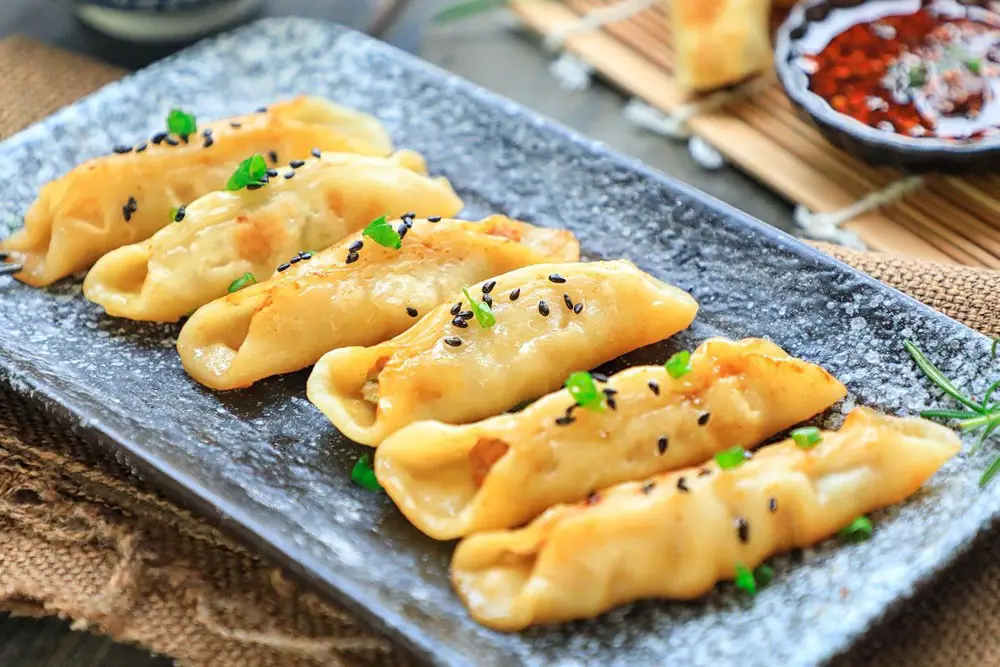
what are potstickers called in Chinese?
Potstickers are called “guotie” in Chinese. The term “guotie” translates to “pot-stuck” or “stuck to the pot,” referring to the cooking technique of pan-frying the dumplings until their bottoms become crispy and stick to the pan. This name is widely used in Chinese cuisine to refer to this specific type of dumpling.
what are potstickers made of?
Potstickers are typically made of the following ingredients:
Dumpling Wrappers: The wrappers are made from wheat flour and water. The dough is kneaded and rolled out into thin circles or squares, which are used to encase the filling.
Filling: The filling for potstickers usually consists of a combination of ingredients,
including:
Ground Meat: Commonly, pork is used for the filling, but other meats like chicken or shrimp can also be used. The ground meat provides a savory flavor and texture to the filling.
Vegetables: Finely chopped vegetables such as cabbage, scallions (green onions), carrots, mushrooms, or water chestnuts are often added to the filling. These vegetables add a fresh and crunchy element.
Aromatics: To enhance the flavor, various aromatics are added, such as minced ginger, garlic, and sometimes cilantro or Chinese chives. These ingredients add a fragrant and distinct taste to the filling.
Seasonings: Common seasonings include soy sauce, sesame oil, salt, and pepper. These seasonings help to balance and enhance the overall taste of the filling.
Cooking Oil: Vegetable oil or another type of cooking oil is used for frying the potstickers.
Additionally, some variations of potstickers may include additional ingredients or regional variations in terms of fillings, but the ingredients mentioned above form the core components of traditional potstickers.
types of potstickers
There are various types of potstickers that differ in their fillings and regional variations. Here are some popular types of potstickers:
Pork Potstickers: This is the most common and classic type of potsticker. The filling consists of ground pork, cabbage, scallions, ginger, garlic, and seasonings. Pork potstickers are widely enjoyed for their savory and juicy flavor.
Chicken Potstickers: Similar to pork potstickers, chicken potstickers use ground chicken as the main ingredient instead of pork. The filling often includes a combination of chicken, vegetables, and seasonings.
Shrimp Potstickers: These potstickers feature a delicious filling made with minced shrimp, along with vegetables and seasonings. Shrimp potstickers offer a unique seafood flavor and a slightly different texture compared to pork or chicken varieties.
Vegetable Potstickers: As the name suggests, these potstickers are filled with a mixture of finely chopped vegetables, such as cabbage, carrots, mushrooms, and scallions. Vegetable potstickers are an excellent option for vegetarians or those looking for a lighter and healthier alternative.
Beef Potstickers: Beef potstickers use ground beef as the main ingredient. The filling is often combined with vegetables, soy sauce, and other seasonings to create a savory and robust flavor.
Lamb Potstickers: Lamb potstickers are popular in certain regions and offer a unique and slightly gamey taste. The filling consists of ground lamb, along with spices and seasonings that complement the meat’s flavor.
Seafood Potstickers: These potstickers are filled with a combination of seafood, such as shrimp, crab, or fish, along with vegetables and seasonings. Seafood potstickers provide a delicate and flavorful option for seafood lovers.
It’s important to note that these are just a few examples, and there can be numerous other variations of potstickers based on regional preferences and creative adaptations.
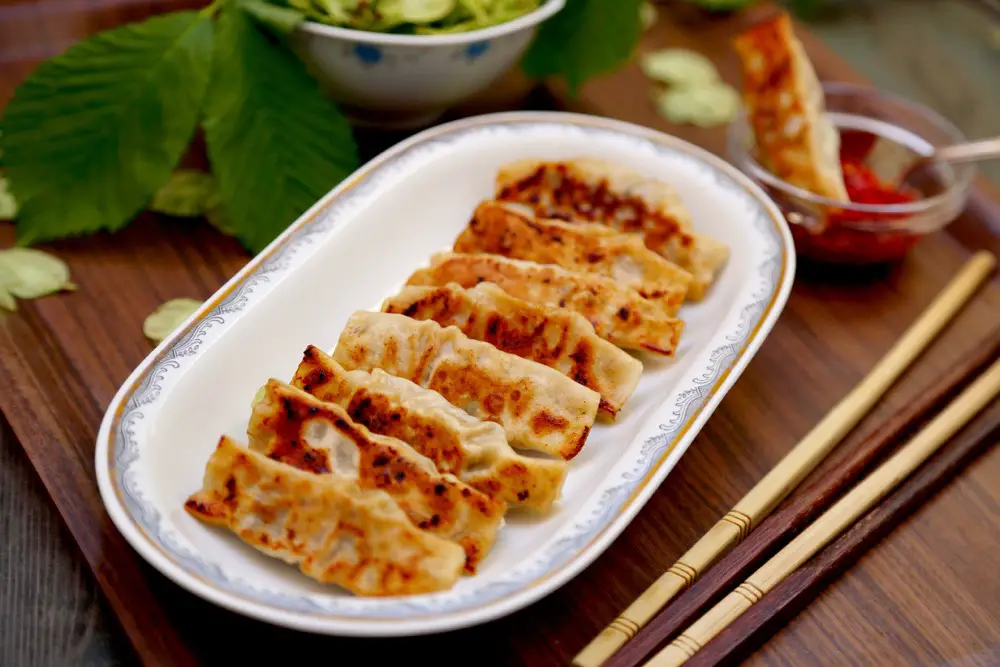
potstickers history
The history of potstickers can be traced back to ancient China, where they originated and gained popularity as a beloved culinary delight. The exact origins of potstickers are subject to debate and are often attributed to legends and anecdotes. However, their historical significance in Chinese cuisine is widely recognized.
One popular legend surrounding the creation of potstickers tells the story of a chef who accidentally left a batch of dumplings cooking for too long. As a result, the dumplings stuck to the pan and formed a crispy bottom. Instead of discarding the dumplings, the resourceful chef decided to serve them, and the potsticker was born. This happy culinary accident turned into a deliberate cooking technique, leading to the creation of the distinctive crispy and tender dumplings we know today.
Potstickers have been enjoyed in China for centuries and have become an integral part of Chinese culinary traditions. They are particularly associated with Northern Chinese cuisine, where they are a popular street food and a common feature in dim sum restaurants.
The significance of potstickers extends beyond their culinary appeal. They have cultural and social significance, often being associated with festivals, celebrations, and family gatherings. For example, during the Lunar New Year, families come together to make dumplings, including potstickers, as a symbol of unity and good luck. The act of making and sharing potstickers has become a cherished tradition, passed down from generation to generation, reinforcing familial bonds and cultural heritage.
Over time, potstickers have gained international popularity, becoming a favorite dish in Chinese restaurants worldwide. Their unique cooking method, flavorful fillings, and delightful texture have captivated the taste buds of people from different cultures and backgrounds.
Today, potstickers continue to be enjoyed as a delicious and versatile dish, representing the rich culinary heritage of China and showcasing the artistry of Chinese dumpling-making techniques.
who invented potstickers?
Legend One:
According to legend, during the first day of the first lunar month in the third year of the Jianlong reign of the Northern Song Dynasty, Emperor Taizu (Song Taizu) was not in the mood for food or drink due to the recent mourning period for the Empress Dowager. In the afternoon, while taking a solitary walk in the palace courtyard, he suddenly caught a whiff of a delightful aroma. Intrigued, he followed the scent and arrived at the imperial kitchen, where he discovered the imperial chefs pan-frying leftover dumplings in an iron skillet. Startled by the Emperor’s presence, the chefs dared not move. Taizu, who hadn’t eaten well for several days, found his appetite piqued by the tantalizing aroma. He asked the chefs to serve him a few, and upon tasting them, he was enchanted by their crispy, tender, and fragrant qualities. He couldn’t stop eating and consumed four or five in succession. When he inquired about their name, the chefs were momentarily at a loss for words. Observing the dumplings being fried in an iron skillet, Taizu casually suggested calling them “guotie” (potstickers). On the eleventh day of the lunar month, during a banquet held in the Spring Pavilion, Taizu entertained his ministers and had the imperial chefs prepare the potstickers as a special treat for everyone to enjoy. The chefs made further improvements to the taste and appearance based on feedback, and the ministers greatly appreciated the dish. Over time, this dish spread from the palace to the common people, undergoing continuous research and refinement by chefs from subsequent generations, ultimately evolving into the potstickers we know today.

Legend Two:
Another legend suggests that potstickers were created after the advent of flat-bottomed pans, although the exact origin is still subject to debate. However, there is a recorded account of Jiaodong potstickers in Dalian. In 1941, a man named Wang Shumao from Fushan relocated to Dalian in Liaoning province. In order to make a living, he combined the traditional Jiaodong potstickers with local customs and made improvements, specializing in this flavorful type of pasta. Initially, he used a handcart to carry stoves, ingredients, bowls, chopsticks, and seasonings. He set up makeshift stalls along the streets, wandered through alleys, or participated in local markets and temple fairs. The potstickers he made had a unique preparation method, distinctive appearance, with a combination of yellow and white colors. They were crispy, tender, and delicious. Due to the small light spots on their faces, they were called “Wang Mazzi potstickers” (Wang’s Freckled Potstickers). In 1942, Wang Shumao purchased a storefront and hung a signboard for “Wang Mazzi Potstickers,” establishing the Jiaodong potstickers in this new and unfamiliar place.
where did potstickers originate from?
Potstickers are a famous traditional snack in northern China, found throughout the country. It is said to have originated in Kaifeng, Henan Province. Potstickers are primarily a type of pan-fried stuffed food.
how did Potstickers get their name?
Potstickers got their name from the cooking technique used to prepare them. When making potstickers, the dumplings are first pan-fried in a skillet until their bottoms become crispy and golden. Once they’re partially cooked and have adhered to the bottom of the pan, a small amount of water is added to create steam. The skillet is then covered, allowing the dumplings to steam and finish cooking. The combination of pan-frying and steaming results in the dumplings having a crispy bottom and a tender, steamed top. The name “potstickers” comes from the fact that the dumplings stick (or “stick to”) the pot during the initial frying process.
how to cook potstickers?
Cooking potstickers is a relatively simple process that involves a combination of pan-frying and steaming. Here’s a step-by-step guide on how to cook potstickers:
Gather your ingredients: You will need potstickers (either homemade or store-bought), cooking oil, water, and any desired dipping sauces.
Heat the skillet: Place a non-stick skillet or frying pan on the stove over medium heat. Add a small amount of cooking oil and swirl it around to coat the bottom of the pan evenly.
Add the potstickers: Carefully place the potstickers in a single layer in the skillet, ensuring that they are not touching each other. The flat side of the potstickers should be in contact with the hot skillet.
Pan-fry the potstickers: Allow the potstickers to cook undisturbed for 2-3 minutes or until the bottoms become golden brown and crispy.
Add water: Once the bottoms are crispy, carefully pour a small amount of water into the skillet, enough to cover the bottom of the pan by about ¼ inch (0.6 cm).
Steam the potstickers: Immediately cover the skillet with a lid to trap the steam. Reduce the heat to medium-low and let the potstickers steam for about 5-6 minutes or until they are cooked through and the wrappers are translucent.
Remove from heat: Once the potstickers are cooked, remove the lid and turn off the heat. Allow any remaining water to evaporate.
Serve: Transfer the potstickers to a serving plate, crispy side up. Serve them hot with your favorite dipping sauces such as soy sauce, vinegar, or chili oil.
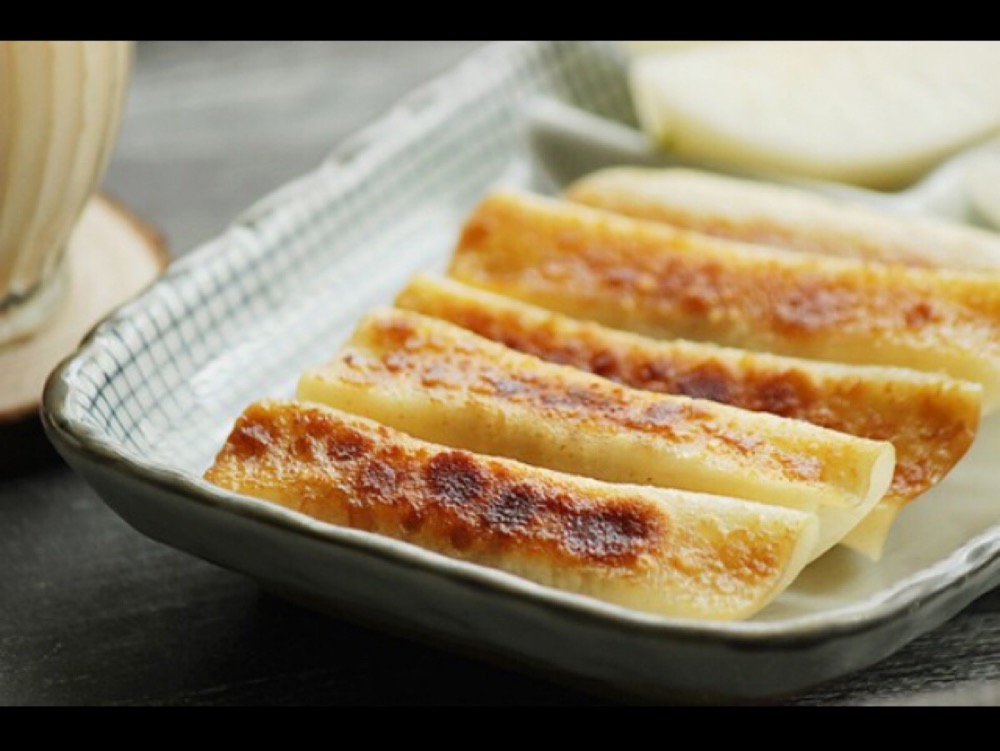
Serving and Dipping Sauce
Potstickers are commonly served as an appetizer or as part of a dim sum spread. They are often accompanied by a dipping sauce that enhances their flavors. A popular dipping sauce for potstickers includes a blend of soy sauce, rice vinegar, chili oil, and sesame oil. Alternatively, you may find variations with ginger, garlic, or additional spices, providing a range of tastes to complement the dumplings.
Cultural Significance
Potstickers hold cultural significance in Chinese cuisine and are often associated with celebrations and gatherings. They are commonly prepared during festivals, such as the Lunar New Year, where families come together to make dumplings as a symbol of unity and good luck. Additionally, the act of making and sharing potstickers has become a cherished culinary tradition, passing down family recipes and techniques from one generation to the next.
why are my potstickers sticking to the pan?
If your potstickers are sticking to the pan, it can be due to a few reasons. Here are some possible causes and solutions to help prevent your potstickers from sticking:
Insufficient oil: Not using enough oil in the pan can cause the potstickers to stick. Ensure that you coat the bottom of the pan evenly with a generous amount of cooking oil before adding the potstickers. The oil acts as a barrier between the dumplings and the pan, preventing them from sticking.
Heat too high: If the heat is too high, it can cause the potstickers to stick. Start by heating the pan over medium heat and adjust as needed. Lowering the heat can help prevent the potstickers from sticking and burning.
Crowding the pan: Overcrowding the pan with too many potstickers can lead to sticking. Leave enough space between the potstickers to allow air circulation and prevent them from touching each other. Cook them in batches if necessary.
Non-stick pan issues: If you’re using a non-stick pan, ensure that it is in good condition. Over time, the non-stick coating can wear off, making it more likely for the potstickers to stick. Consider using a well-seasoned cast-iron skillet or a stainless steel pan with enough oil to prevent sticking.
Patience during cooking: It’s crucial not to disturb the potstickers too early. Let them cook undisturbed for a couple of minutes to allow the bottoms to develop a crispy crust before attempting to flip or move them. If you try to move them too soon, they may stick to the pan.
are potstickers dumplings
Yes, potstickers are a type of dumpling. Dumplings are a broad category of filled dough-based dishes that are popular in various cuisines around the world. Potstickers specifically refer to a style of dumplings that are pan-fried on one side until crispy, while the other side is steamed. They are typically filled with a mixture of ground meat (such as pork or chicken), vegetables, and seasonings, wrapped in a thin dough wrapper. The combination of the crispy bottom and steamed top is what distinguishes potstickers from other types of dumplings.
are potstickers healthy
The healthiness of potstickers can vary depending on the specific ingredients and cooking methods used. Here are some factors to consider when evaluating the healthiness of potstickers:
Filling Ingredients: The filling of potstickers typically includes a combination of meat (such as pork or chicken), vegetables, and seasonings. Choosing lean meats and incorporating a variety of vegetables can increase the nutritional value of the filling. Additionally, opting for whole-food ingredients and minimizing the use of processed or high-sodium ingredients can contribute to a healthier filling.
Cooking Method: Potstickers are typically pan-fried and then steamed. While pan-frying provides a crispy texture, it also means that some oil is used during the cooking process. Excessive oil can add extra calories and fat. However, the steaming portion of the cooking process helps retain moisture without requiring excessive oil.
Portion Size: Portion control is essential when considering the healthiness of any food, including potstickers. Pay attention to serving sizes and try to consume them in moderation as part of a balanced meal or as an appetizer.
Dipping Sauces: Dipping sauces often accompany potstickers, and their nutritional impact can vary. Some sauces can be high in sodium, sugar, or unhealthy fats. Opting for lighter and healthier dipping sauces, such as low-sodium soy sauce, vinegar, or homemade sauces with fresh ingredients, can make potstickers a healthier choice.
It’s important to note that individual dietary needs and preferences can influence the perception of whether potstickers are considered healthy. As with any food, moderation and mindful ingredient choices are key. If you’re concerned about the healthiness of potstickers, you can also explore alternative cooking methods like steaming or baking to reduce the amount of oil used.
are potstickers good for weight loss?
When it comes to weight loss, potstickers may not be the most ideal food choice due to a few factors:
Calorie Content: Potstickers typically contain a moderate amount of calories, primarily from the dough wrapper and the filling. The exact calorie count can vary depending on the size, ingredients, and cooking method used. If you’re aiming to lose weight, it’s important to be mindful of your overall calorie intake and consider the portion size of potstickers.
Fat Content: Potstickers are often pan-fried, which requires the use of oil. While pan-frying provides a desirable texture, it also adds extra fat and calories to the dish. The fat content can be reduced by opting for alternative cooking methods like steaming or baking, or by using minimal amounts of healthy oils.
Carbohydrates: The dough wrapper of potstickers is typically made from wheat flour, which contributes to the carbohydrate content of the dish. If you’re following a low-carbohydrate diet for weight loss, potstickers may not align with your dietary goals.
Portion Control: Potstickers are often served as part of a meal or as an appetizer. It’s important to practice portion control and be mindful of the number of potstickers consumed, as excessive portions can contribute to higher calorie intake.
If you enjoy potstickers and want to incorporate them into your weight loss plan,
consider the following tips:
- Opt for smaller-sized potstickers or make homemade ones to control portion sizes.
- Use lean protein and plenty of vegetables in the filling to increase the nutritional value.
- Choose healthier cooking methods like steaming or baking instead of pan-frying.
- Pair potstickers with a balanced meal that includes plenty of vegetables and lean protein.
- Remember, successful weight loss is achieved through a combination of balanced nutrition, portion control, regular physical activity, and overall lifestyle choices. It’s always best to consult with a healthcare professional or a registered dietitian for personalized advice tailored to your specific needs and goals.
difference between potstickers and wontons
Potstickers and wontons are both types of dumplings, but they have some distinct differences in terms of preparation, shape, and cooking methods. Here are the main differences between potstickers and wontons:
Shape: Potstickers typically have a crescent or half-moon shape. They are folded and sealed in a way that creates a flat base, allowing them to stand upright in the pan during cooking. Wontons, on the other hand, are usually shaped like small, sealed pouches or triangles.
Cooking Method: Potstickers are pan-fried and then steamed, which gives them a crispy bottom and a tender, steamed top. Wontons are primarily boiled or simmered in water or broth until they are cooked through.
Filling: The fillings of potstickers and wontons can vary, but there are some common differences. Potstickers often have a heartier filling that includes ingredients like ground meat (such as pork or chicken), vegetables, and seasonings. Wontons, on the other hand, often have a lighter and more delicate filling, which can include a combination of minced meat, shrimp, or vegetables, often seasoned with soy sauce, ginger, and other aromatic ingredients.
Usage: Potstickers are commonly served as an appetizer or a main course and are often accompanied by dipping sauces. They can be enjoyed as a standalone dish or served with rice or noodles. Wontons are often used in soups, such as wonton soup, where they are cooked in a flavorful broth and served with additional ingredients like noodles, vegetables, and herbs.
While there are similarities between potstickers and wontons as both are types of dumplings, these differences in shape, cooking method, filling, and usage set them apart and give each its own unique characteristics.
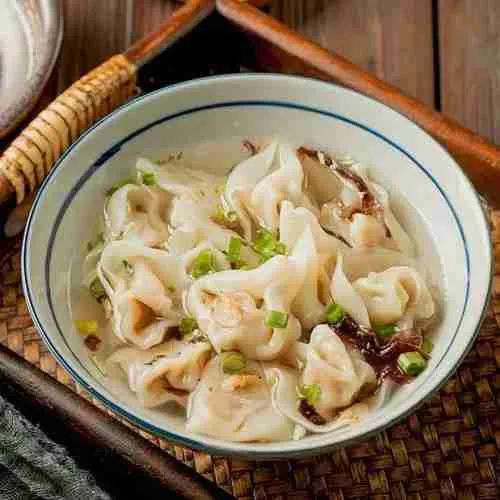
potstickers VS spring rolls
Potstickers and spring rolls are both popular appetizers in Asian cuisine, but they have distinct differences in terms of their ingredients, cooking methods, and nutritional profiles. Here’s a comparison between potstickers and spring rolls:
Potstickers:
Ingredients: Potstickers typically consist of a filling made with a combination of ground meat (such as pork or chicken), vegetables, and seasonings, wrapped in a thin dough wrapper.
Cooking Method: Potstickers are pan-fried on one side until crispy, creating a golden brown bottom, and then steamed to cook the filling and seal the top.
Texture: Potstickers have a crispy bottom and a tender, steamed top.
Flavor: Potstickers have a savory and flavorful taste due to the combination of ingredients and seasonings used in the filling.
Nutritional Profile: The nutritional profile of potstickers can vary based on the specific ingredients used and the cooking method. They typically provide a moderate amount of calories, carbohydrates, protein, and fat. The calorie and fat content can be influenced by the cooking oil used for pan-frying.
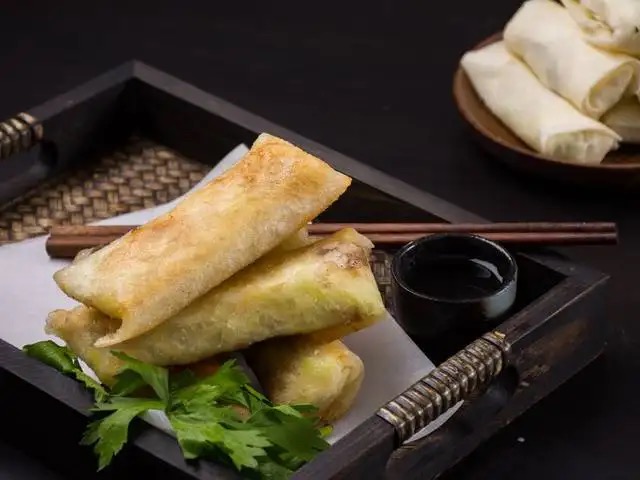
Spring Rolls:
Ingredients: Spring rolls consist of a filling made with a variety of ingredients such as vegetables, bean sprouts, shrimp, and sometimes noodles, wrapped in a thin rice paper wrapper.
Cooking Method: Spring rolls are typically not cooked. The filling is prepared separately, and the rice paper wrapper is soaked in water to soften before being filled with the ingredients. They are typically served fresh or can be deep-fried for a crispy version.
Texture: Spring rolls have a fresh and crunchy texture, especially when served fresh. Deep-fried spring rolls have a crispy exterior.
Flavor: Spring rolls offer a refreshing and light taste, with the flavors of the fresh vegetables and other fillings shining through. They are often served with dipping sauces to enhance the taste.
Nutritional Profile: Spring rolls can be a lighter option compared to potstickers, especially when served fresh. They are typically lower in calories and fat, depending on the filling and cooking method. Deep-fried spring rolls will have a higher calorie and fat content due to the frying process.
In terms of healthiness, fresh spring rolls with a variety of vegetables can be a lighter and more nutrient-dense choice compared to potstickers. However, the overall healthiness of both dishes depends on the ingredients used, cooking methods, and portion sizes. It’s important to consider your dietary needs and preferences and enjoy these appetizers in moderation as part of a well-balanced meal.
potstickers VS fried dumplings
Difference in Cooking Methods between Pan-Fried Dumplings and Potstickers:
The main difference between pan-fried dumplings and potstickers lies in their cooking methods. Let’s start with pan-fried dumplings. Pan-fried dumplings are simply dumplings cooked by frying in oil, hence the name “pan-fried.” To make pan-fried dumplings, the dumplings are first boiled until partially cooked and then pan-fried until the bottoms become crispy and golden brown, resulting in a crispy exterior and a tender filling. On the other hand, potstickers are not boiled; they are only pan-fried. During the frying process, a small amount of water is added to the pan to create steam and prevent the potstickers from sticking. It’s worth mentioning that, in a way, the dumplings commonly consumed by the Japanese can be considered potstickers. The only difference is the translation of the name.
Difference in Nutritional Value between Pan-Fried Dumplings and Potstickers:
Both pan-fried dumplings and potstickers are made primarily from flour and pork, so they share similar nutritional components. They are rich in protein, carbohydrates, vitamins, minerals, essential fatty acids, and provide hemoglobin, which can help nourish the heart and kidneys and improve iron-deficiency anemia. In terms of nutritional value, pan-fried dumplings tend to have a slightly richer filling. Besides pork, they often include a variety of vegetables or other types of meat for enhanced flavor. Consequently, pan-fried dumplings may contain more dietary fiber and higher levels of vitamins, making them nutritionally balanced compared to potstickers.
Difference in Serving Styles between Pan-Fried Dumplings and Potstickers:
When it comes to serving pan-fried dumplings and potstickers, there are no strict dietary restrictions, and personal preferences can dictate the accompaniments. However, it’s worth noting that when potstickers are filled with lamb, it’s best to avoid consuming them with extremely cold foods to prevent discomfort caused by the temperature contrast. In Japan, it’s common to see people eating pan-fried dumplings with rice because, for the Japanese, pan-fried dumplings are considered a vegetable rather than a staple food. This has led to the creation of set meals featuring pan-fried dumplings and rice. In China, some people enjoy dipping pan-fried dumplings or potstickers in vinegar. Ultimately, individual taste preferences vary, so enjoy them according to your own liking.
Conclusion
Chinese potstickers are a culinary treasure that has captured the hearts and palates of people worldwide. From their humble origins to their versatile fillings and unique cooking techniques, potstickers offer a delightful sensory experience. Whether you’re enjoying them at a dim sum restaurant or attempting to make them at home, the journey of savoring Chinese potstickers is one filled with history, culture, and deliciousness. So, the next time you encounter a plate of potstickers, savor each bite and appreciate the culinary artistry behind these beloved Chinese dumplings.
